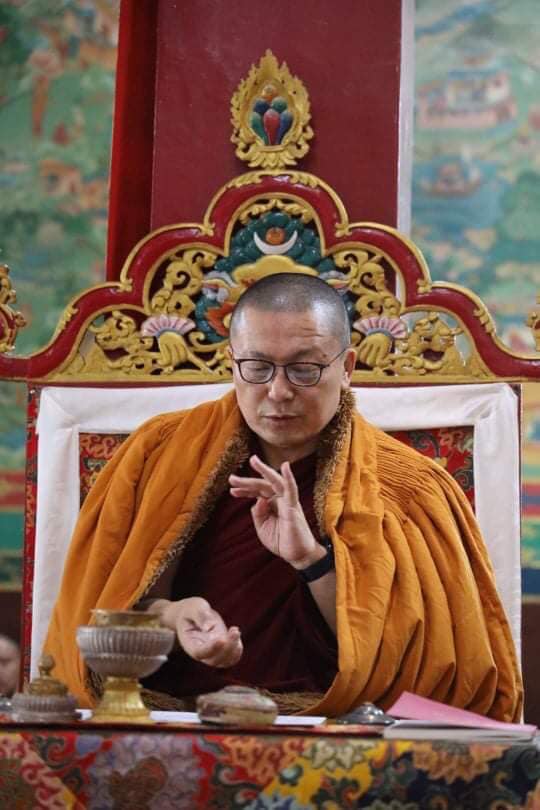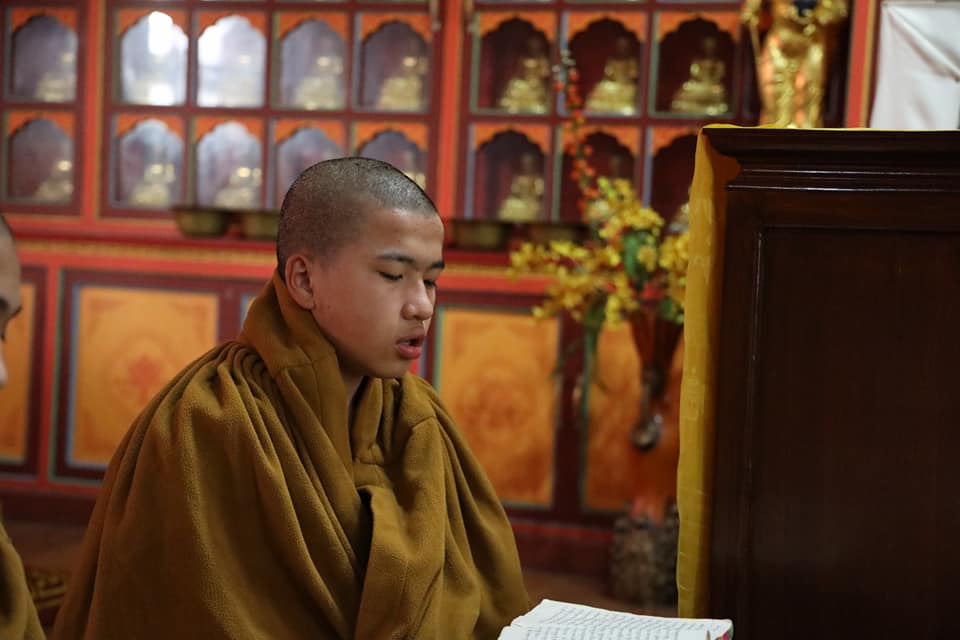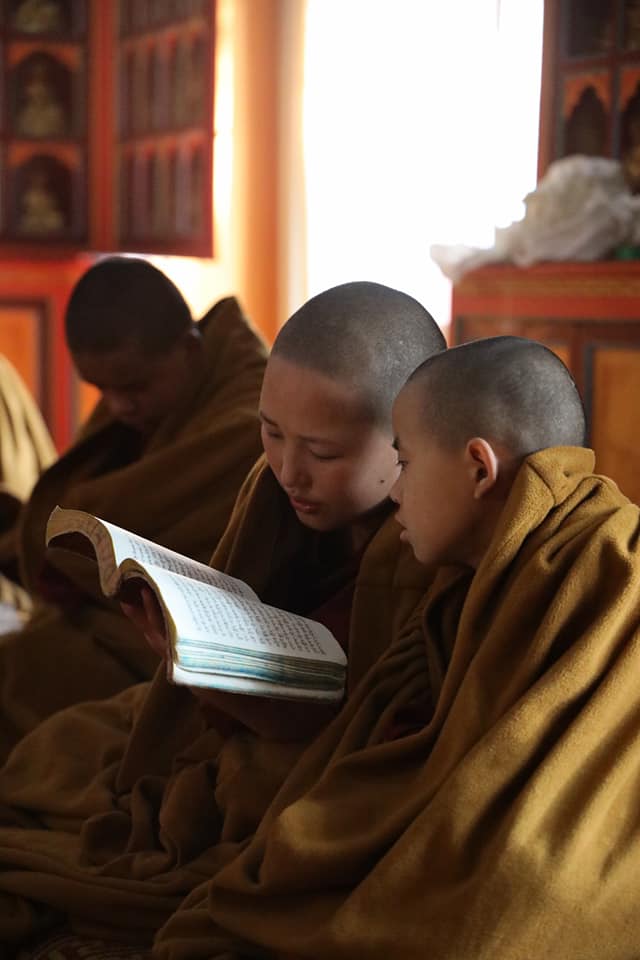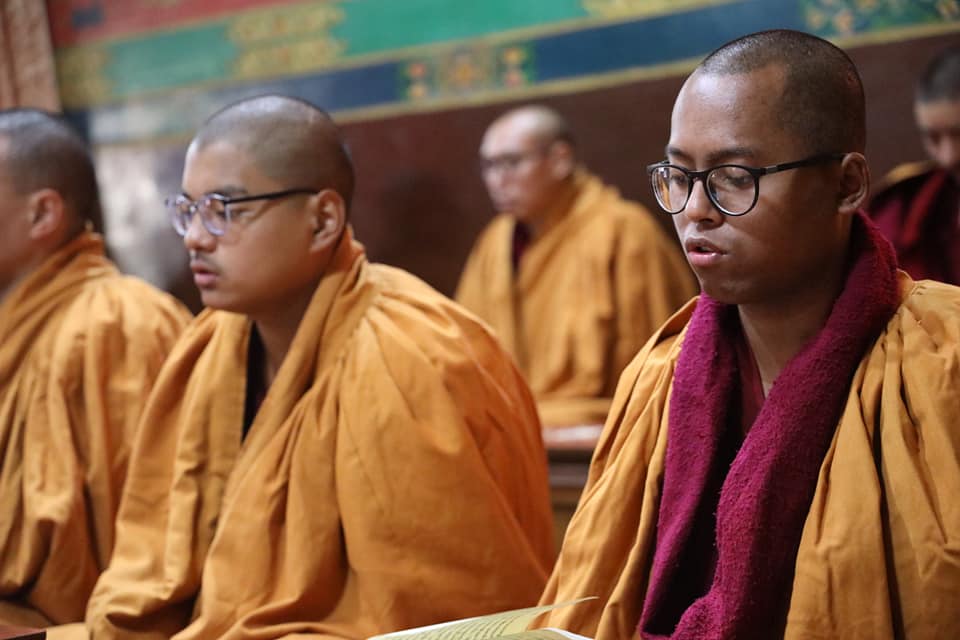The Great Sakya Monlam

His Eminence Thartse Khen Rinpoche presiding over The Great Sakya Monlam at Ngor Monastery
The Great Sakya Monlam was performed from 28 December 2020 to 1 January 2021. Due to COVID-19, the Sakya Monlam was not principally performed at one of the four principle Buddhist holy locations, but was performed remotely by monks and nuns at their respective monastic institutions. However, a small Sakya Monlam was also performed at the foot of the Bodhi tree in Bodhgaya.
At Ngor Monastery, the Sakya Monlam was performed in the main shrine hall (Gonpa) and was presided over by His Eminence Thartse Khen Rinpoche. In attendance were esteemed rinpoches, tulkus, khenpos and monks from Ngor Monastery and the Sakya Institute of Vajrayana (SIV). Junior monks of Ngor Monastery performed the Sakya Monlam prayers and recitations in Ngor Monastery’s Sakya Pandita Shrine Hall. Nuns and lay people also participated in the Monlam at Ngor Monastery.
A brief explanation about Sakya Monlam
The term Monlam means the path of aspiration and is a form of prayer and refers to the tradition of Monlam Chenmo, the great prayer gathering that has historically been part of Tibetan New Year celebrations for more than 600 years. During a Monlam, the participants recite prayers with the aspiration to liberate all sentient beings from suffering and for all to achieve enlightenment.
The prayers to be recited during a Sakya Monlam were determined by His Holiness the 41st Sakya Trizin Kyabgon Gongma Trichen Rinpoche along with other senior Sakyapa lamas and monks who chose 100,000 recitations of the Samantabhadra Prayer as the main recitation.
The benefit of reciting the Samantabhadra Prayer is inconceivable and beyond description. Because of this great benefit, many masters in Tibet instituted large prayer gatherings where the Samantabhadra Prayer was recited by hundreds or thousands of monks, nuns, and lay people. These prayers, or monlam, festivals were performed by all the major schools of Tibetan Buddhism and were often held where holy masters of the past had dwelled, taught the Dharma or passed away, or near temples or other places of great religious significance.
The places to gather are decided in accordance with the advice of Lord Buddha Shakyamuni, who said just before entering mahaparinirvana:
Noble sons and daughters, those faithful ones should travel to these four holy places, and recall them in their minds for as long as they live. If one wonders where those four holy places are, they are the place where the Bhagwan Buddha was born; the place where the Bhagwan Buddha was enlightened; the place where the Bhagwan Buddha taught the Dharma; and the holy place where the Bhagwan Buddha entered mahaparinirvana. Bikkshus, after I enter parinirvana, some pilgrims may come to these places to see the stupas and make prostrations. When they come, you should tell them these words…For those who are unable to see the holy face of the actual Buddha, they should go and see these four holy places, and practice the Dharma in these places.





























